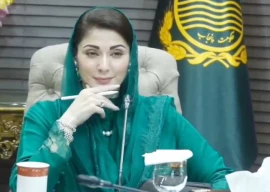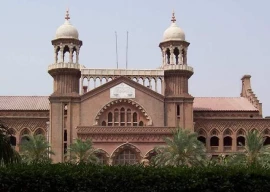
“Article 25-A will serve as a catalyst to ensure provision of uniform and quality education,” said former education minster Mian Imran Masood. He was speaking at a policy dialogue to discuss issues concerning out of school children in the Punjab. The dialogue was organised by the Idarae Taleem-o-Aagahi (ITA) in collaboration with UKAID from the Department of International Development and Foundation Open Society Institute on Thursday.
Masood said “out of school children (OOSC)” and “drop out rate” were the biggest challenges for any government. “The greater challenge is to retain children.”
Masood said that in 15 districts across the province there were more girls than boys who were out of school. He said free education could encourage parents to send their children to school. He said quantitatively almost 70 per cent of educational institutes were primary and secondary and were part of the pyramid structure of the educational system. He said as you go up the pyramid, the drop out rate increases politically due to a lack of higher education institutes.
Presenting a paper, Out of School Children in Punjab: Looking at Access and Equity, ITA provincial communication officer Noor-i-Hira Waqas said female students were particularly affected by missing facilities which discouraged their enrollment as well. She said that according to the Pakistan Social and Living Standards Measurement (2010-2011), the total enrollment at the primary level in Punjab was 61 per cent. With 3.8 million children (according to UNESCO and the Punjab government) between ages of 5 and 9 out of school in Punjab, Waqas said there was a dearth of practical solutions to ensure enrollment.
Quoting from Annual Status of Education Report 2011, Waqas said 22 per cent of five-year-olds in the province were not enrolled in any school. She stated that Rajanpur and Lodhran had the highest number of OOSC (38% and 30% respectively between the ages of 6 and 16).
With ASER 2011 stating that the largest OOSC in Punjab were between the ages of 6 to 10 and 14 to 16, Waqas said an Institute of Social and Policy Science study had indicated that in the next 15 years, 19.32 per cent children will be going to school for which the government will have to increase the education budget by 15 per cent from Rs152 billion to Rs337 billion.
Dr Farooq Naseer, a LUMS assistant professor, said there was a reason why people fail to “opt” for education. “Any discussion involving access to education cannot be divorced from one involving the quality of education.” He said the lack of teachers was one of the prime factors in the poor quality of education and ultimately low enrollment.
Chaudhary Javed Ahmad, chairman of the Standing Committee on Education, said more than Rs19 billion would be allocated for school education this year.
UNICEF Education Officer Asif Abrar said besides a safe and healthy environment, “school readiness” was important to ensure greater student enrollment.
Schools Additional Secretary Mukhtar Noul said that as of April 26, there had been an increase in enrollment with 75,000 children being enrolled as compared to last year. He claimed that though the attendance of teachers had risen to 90 per cent, there was still a need to ensure that those teachers were actually at the classes. He said provision of toilets in girls’ primary schools was a priority.
Punjab Education Foundation Chairman Raja Mohammad Anwer said poor primary and secondary schools had resulted in the basic failure of the education system.
Published in The Express Tribune, April 27th, 2012.
COMMENTS (2)
Comments are moderated and generally will be posted if they are on-topic and not abusive.
For more information, please see our Comments FAQ








1732012115-0/Untitled-design-(14)1732012115-0-270x192.webp)








Making schools good is different from making them attractive. The current trend is to make schools and colleges attractive to students in the hope of making more money.
Mian Shehbaz Sharif is making going to school attractive for children. I hope if current PMLN govt will continue...there will be extra-ordinary development in educations sector.